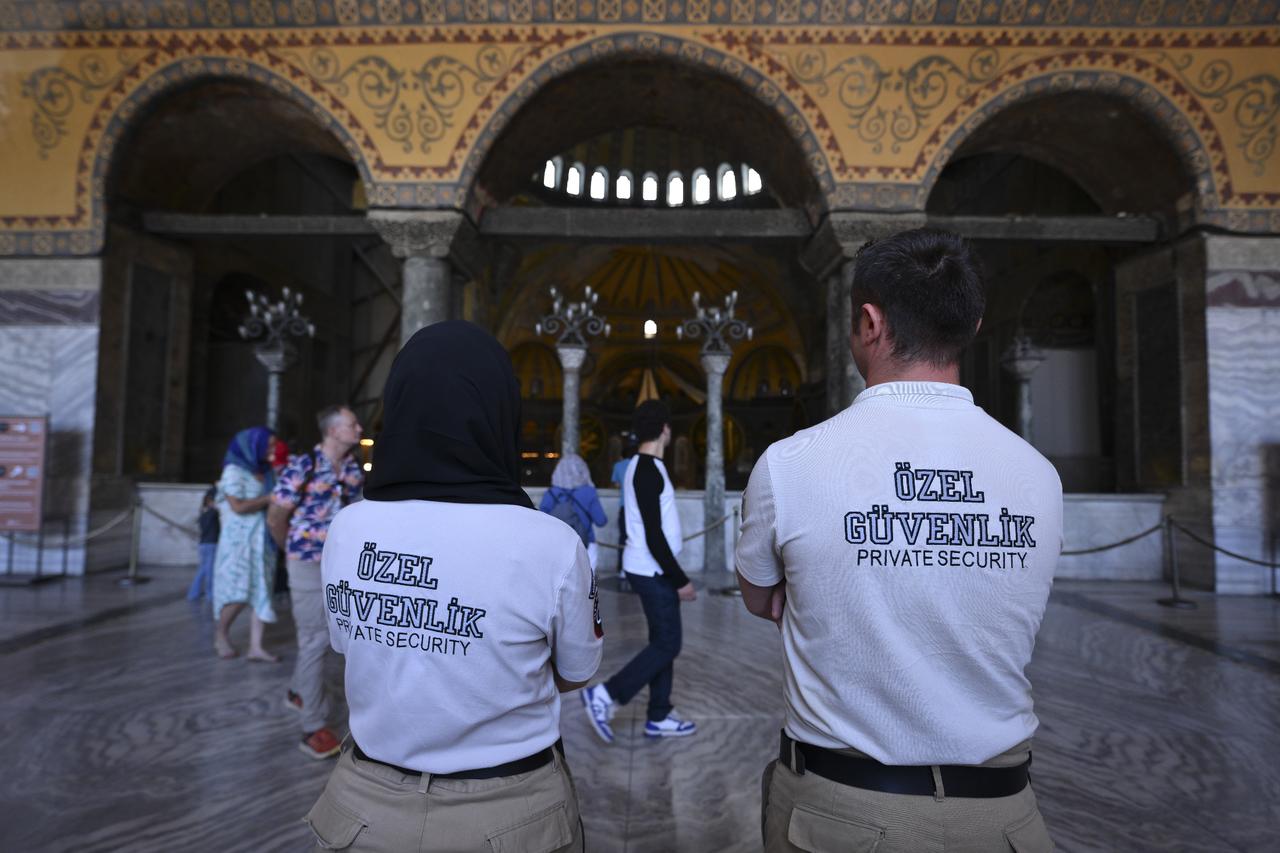
The Hagia Sophia Grand Mosque, one of the most iconic landmarks in Türkiye, is now protected and managed with artificial intelligence-supported systems, while enhanced visitor services make the site more accessible to both local and international tourists. Originally constructed three times and standing strong for over 1,500 years, Hagia Sophia today balances historical preservation with modern innovation.
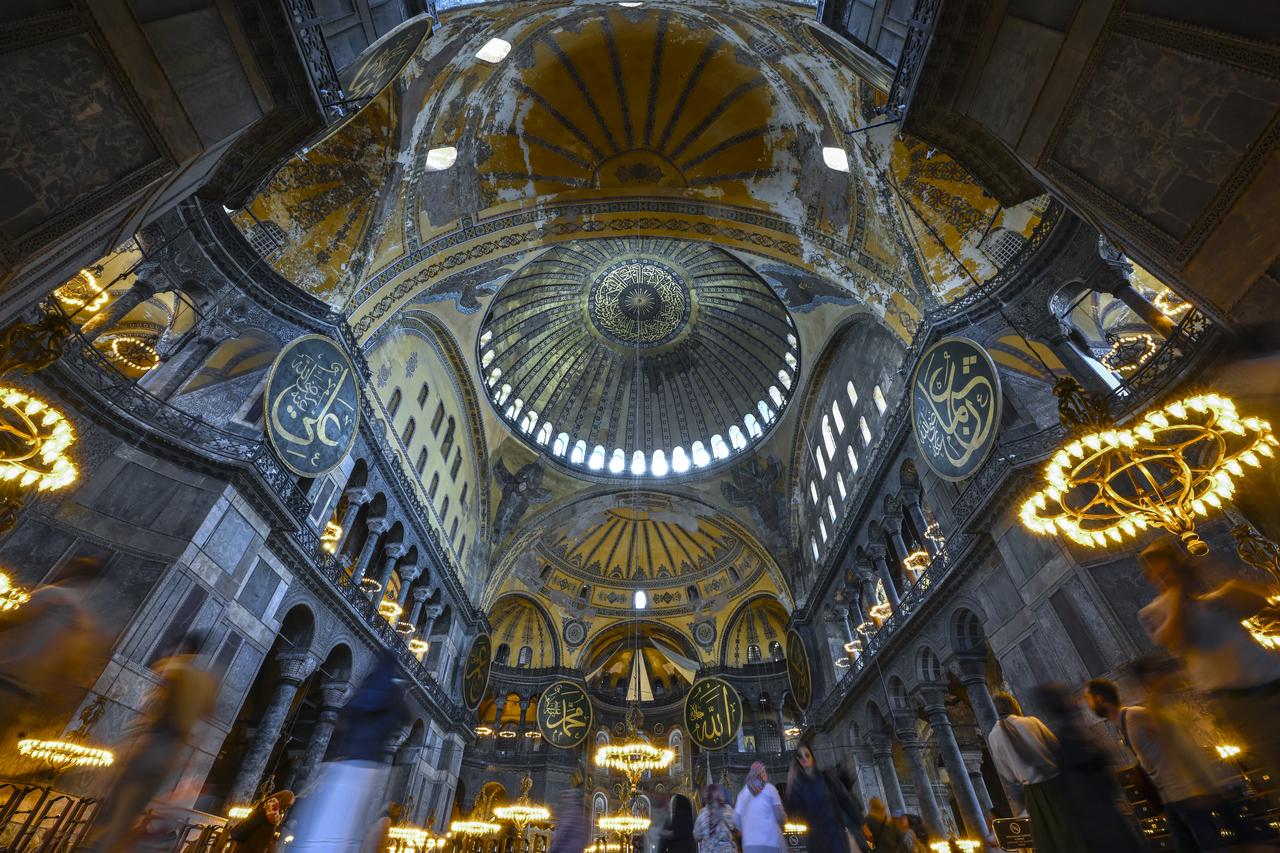
Once a Byzantine cathedral, then an Ottoman mosque, Hagia Sophia was transformed into a museum by cabinet decree in 1934. After 86 years, the structure was reclassified as a mosque by presidential order on July 10, 2020.
Since reopening for worship, the site has welcomed approximately 40 million visitors in five years, according to the Istanbul Foundations' 1st Regional Deputy Director Levent Cetin.
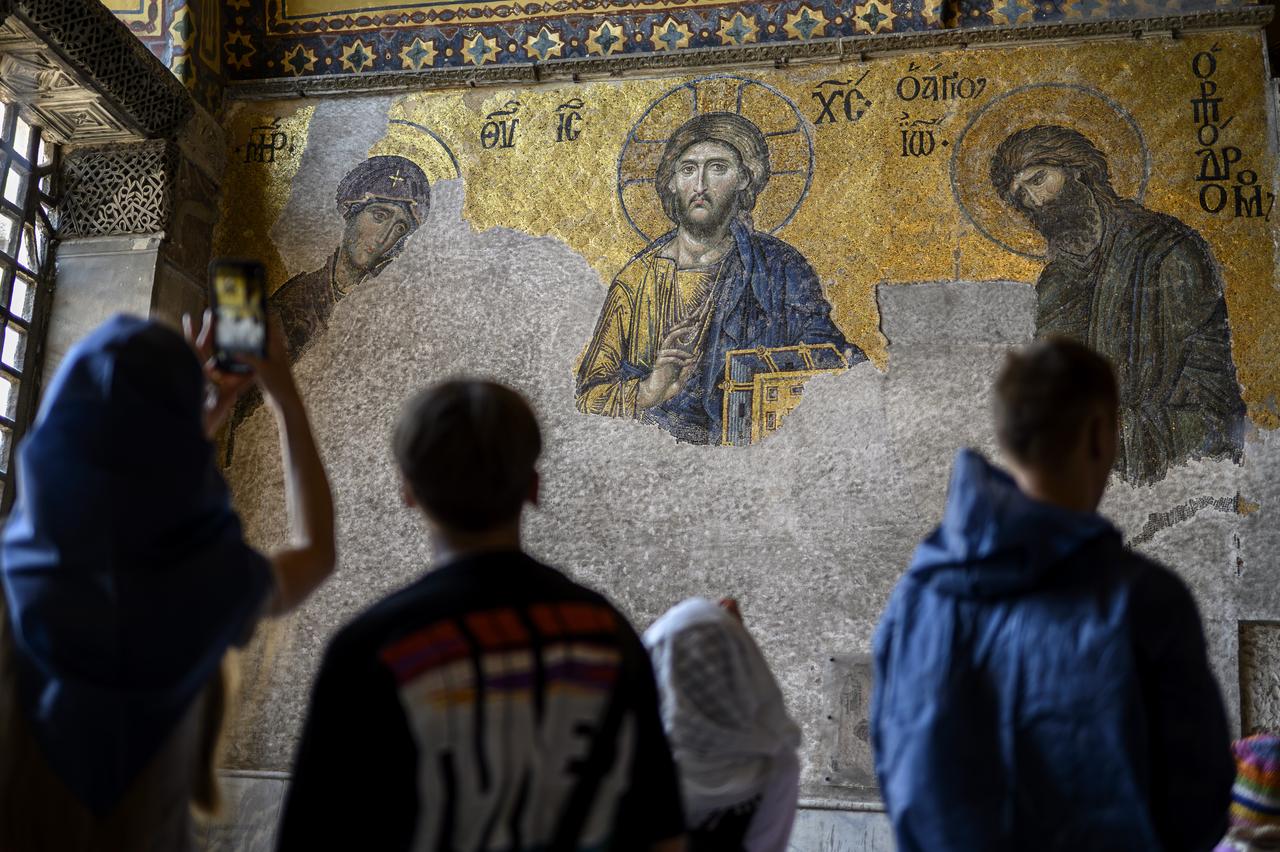
To ease congestion and preserve the sacred atmosphere, a visitor management plan was introduced in January 2020. This system separates the flows of worshippers and tourists, allowing both groups to enter and move through the site more comfortably. “You no longer see long queues at the entrance of Hagia Sophia,” said Cetin.
The gallery floor, once closed off to the public, is now open under strict protective measures to prevent damage to mosaics and architectural features.
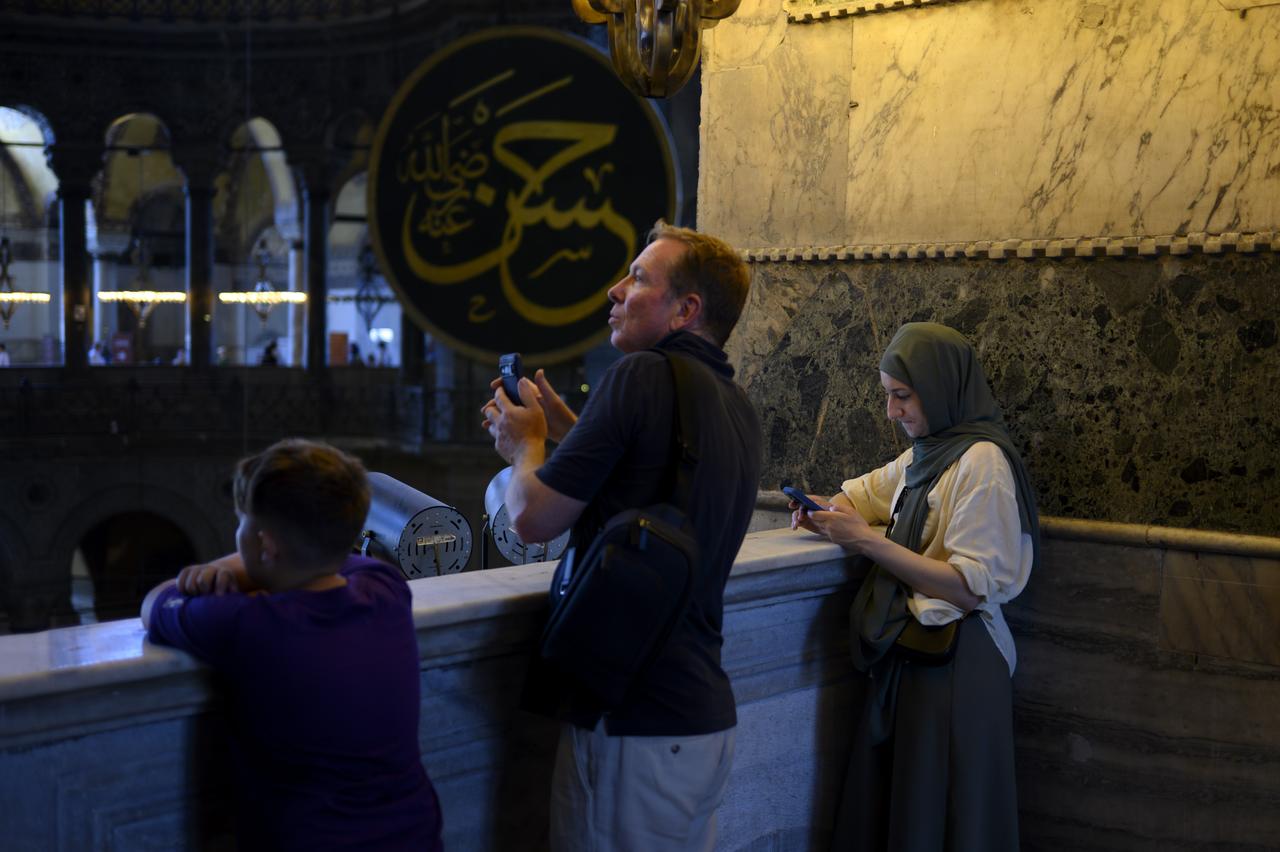
Since January 2024, the gallery level has featured an audio guide system available in 23 languages. Visitors can use personal or rented headphones to listen to historical and architectural information, including details about Byzantine mosaics and Ottoman additions such as the sultan’s lodge and muezzin platform. All services are offered free of charge. This allows tourists to engage with the site in their native language without disturbing those in prayer.
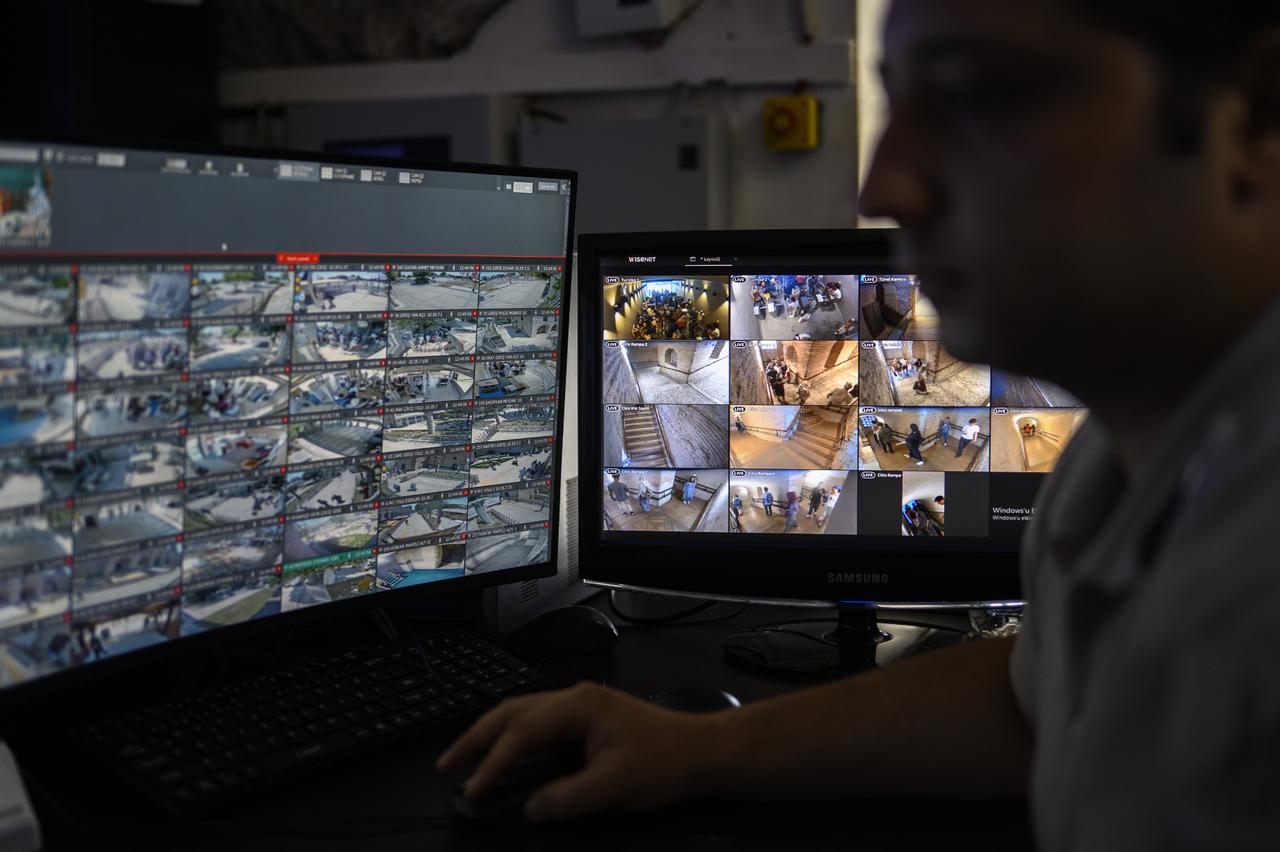
The mosque now operates under a revamped security infrastructure that incorporates artificial intelligence. Hundreds of upgraded surveillance cameras feed into a central system capable of detecting potential breaches or unauthorized entry into restricted areas.
This allows security personnel to respond swiftly and prevent possible damage. Cetin noted that the new system significantly supports staff efforts to preserve the building’s integrity.
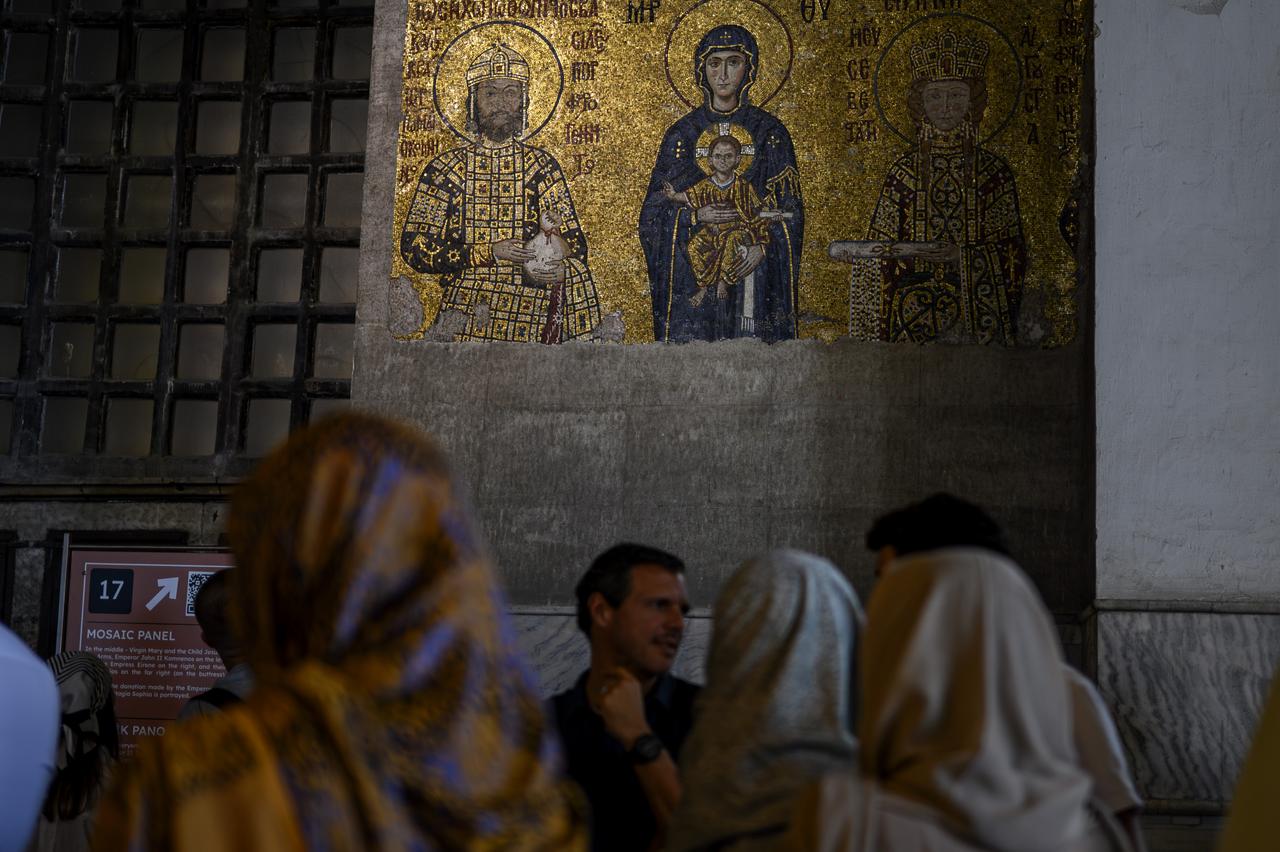
Restoration efforts continue in stages, with completed projects including the restoration of the mosque’s surrounding courtyards, Ottoman tombs, the elementary school, and timekeeping house. A “digital twin” of the mosque has also been created to support planning and conservation.
Current restoration work focuses on structural elements of the main dome and semi-domes, guided by decisions from the scientific committee overseeing the site. Renovation of the Sultan Bayezid II minaret is nearing completion.